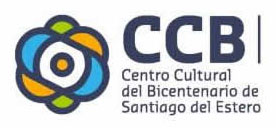The province of Santiago del Estero is a vast area that offers innumerable vestiges of cultural remains of great value, as certain indications of its prehistory, of the primitive groups that walked through it and of the indigenous peoples that settled in the pre-Hispanic period, as well as of the early times of the conquest.
Archaeological studies carried out by the researcher Dra. Amalia Gramajo de Martínez Moreno, determined that the mountainous area (to the west, the Sierras de Guasayán, near the border with the province of Catamarca and to the south, those of Ambargasta and Sumampa, in the area bordering the province of Córdoba), constitutes the area of the plastic manifestations made by man on the rocky surface, being this a symbolic form of enunciating ideas, experiences, arising from the magical-religious sphere, called: RUPESTRE ART and without any doubt, it is one of the most important expressions of prehistoric mankind that has reached the present day.
These expressions are presented as follows:
– Petroglyphs: (drawings engraved in the rock)
– Pictographs (paintings)
– Painting – Engraving (both techniques combined).
The motifs are generally abstract and representational:
– Circles with appendages and ornamentations..,
– Simple geometric, spiral and snake-like motifs.
– Footprints”, human and zoomorphic footprints, especially those of felines, rheas and guanacos.
– Circles, full-bodied curvilinear and circles with appendages and ornamentation.
– Spiral, undulated and serpentiform motifs, punctiform and stepped, parallel lines (in smaller percentages).
– The “footprints style”, feline footprints formed by a series of presses, five corresponding to the toes and one of more or less circular shape for the sole.
– The “tridigitos” or rhea prints are expressed by three lines joined or almost joined at one end.
– Guanaco tracks are expressed by two short, parallel lines, with shapes similar to horseshoes. Human figures, which are scarce, are represented seen from the front, with probable ornaments on the back in some cases. The most abundant are human footprints.
– Simple geometric motifs such as cruciforms, peniform, rakes, parallels, circles with rays, (sun?) and stepped fretwork are found in greater numbers.
– Mammals are presented in profile.
– Lizards are shown from above.
– Birds are depicted in a very schematic manner.
– Representation of the whole by the parts Representation of the animal by a part which characterises it in a special way.


